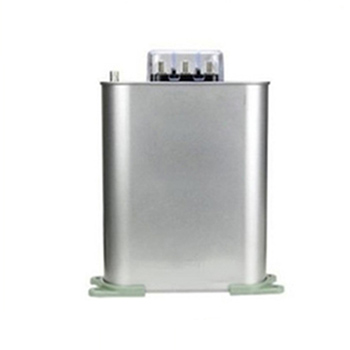Shunt Capacitors Troubleshooting
The shunt capacitor is mainly used to compensate the reactive power of the inductive load of the power system to improve the power factor, improve the voltage quality and reduce the line loss. Today, in addition to a brief introduction to the main function of shunt capacitors, we mainly introduce the fault judgment and troubleshooting of shunt capacitors.
The shunt capacitor is mainly used to compensate the reactive power of the inductive load of the power system to improve the power factor, improve the voltage quality and reduce the line loss. Single-phase shunt capacitors are mainly composed of capacitor core, shell and outlet structure. The metal foil (as a pole plate) is stacked and wound with insulating paper or plastic film, and a capacitor core is formed by pressing several components, insulating parts and fasteners, and impregnated with insulating oil. The leads of the capacitor plates are led to the outgoing connection piece at the lower end of the outgoing porcelain bushing after being connected in series and in parallel. The metal casing of the capacitor is filled with insulating oil.
Main function
Parallel electrical equipment is a reactive power compensation device. It usually (centralized compensation type) is connected to the low-voltage bus of the substation.
There are three main functions:
- Compensate the reactive power of the system.
- Improve power factor, thereby reducing power loss.
- To improve voltage quality and equipment utilization, it is often used in conjunction with on-load voltage regulating transformers. Commonly parallel electrical appliances can be divided into single iron shell type, box type, collective type, semi-closed type, dry type and inflatable type according to their different structures.
Fault Judgment and Cause Analysis of Parallel Capacitors
- Oil leakage. Oil leakage from shunt capacitors is a common phenomenon. The main reason is poor product quality, improper operation and maintenance, and long-term operation and lack of maintenance, resulting in rust and corrosion of the outer skin.
- Expansion of the capacitor case. Due to the action of the electric field, the insulator inside the capacitor is freed, gas is decomposed or some components are broken down. The electrode discharges the casing, which increases the internal pressure of the sealed casing, causing the casing to expand and deform.
- The temperature rise of the capacitor is too high. The main reason is that the capacitor runs through the current and the ventilation condition is poor. For example, poor ventilation due to improper capacitor design. The long-term overvoltage operation of the capacitor causes the capacitor overcurrent. The high-order harmonics generated by the rectifier device make the capacitor overcurrent, etc.
In addition, the failure of the internal components of the capacitor, the aging of the dielectric, the dielectric loss, and the increase of the sine of the dielectric loss angle may cause the capacitor temperature to rise too high. The increase in the temperature of the capacitor will affect the life of the capacitor, and may also cause insulation breakdown and short-circuit the capacitor. - The surface of the capacitor ceramic network is discharged. The reason for this is defective porcelain insulation and dirty surfaces.(Ceramic capacitors)
- Abnormal sound. If it is found that there is a discharge sound or other abnormal sound during operation, it means that there is a fault inside the capacitor.
- Capacitor burst. When the capacitor has a dielectric breakdown between electrodes or to the casing, other capacitors connected in parallel will release a large amount of energy to the capacitor, causing the capacitor to burst and cause a fire.
Troubleshooting of parallel capacitors
- When the capacitor shell seepage and oil leakage are not serious, rust removal, welding and painting can be performed at the seepage and leakage parts of the shell.
- If the outer code of the capacitor radiator expands, it should be replaced.
- If the room temperature is too high, the ventilation conditions should be improved. If the capacitor rises too high due to other reasons, the reason should be found out and dealt with. If it is the problem of the capacitor itself, it is necessary to change the capacitor hard.
- Capacitors should be inspected and cleaned regularly.
- If the capacitor has abnormal sound, pay attention to observation. In serious cases, it should be stopped immediately and replaced.
- If the capacitor bursts, it should be replaced in time.

